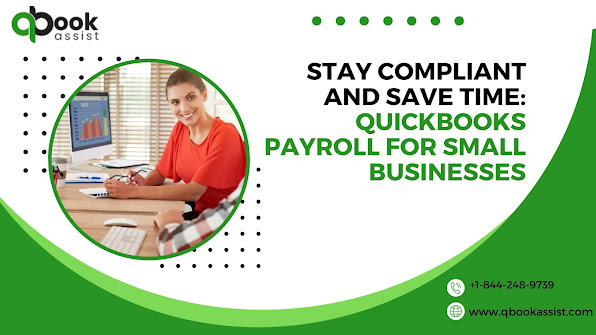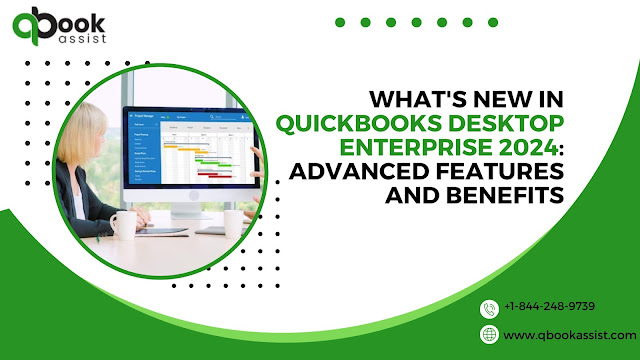Stay Compliant and Save Time: QuickBooks Payroll for Small Businesses
Payroll is a key activity that requires precision and compliance in the complex world of QuickBooks small business management. QuickBooks Payroll, a powerful Intuit product, emerges as a game changer, providing small businesses with a simple approach to keep compliant with ever-changing requirements while saving critical time. This detailed guide examines QuickBooks Payroll's features, benefits, and step-by-step implementation for small businesses looking to optimize their payroll procedures.
Understanding QuickBooks Payroll
QuickBooks Payroll is an integrated payroll solution designed for small businesses. It facilitates the automatic calculation of employee salaries, tax withholdings, and deductions, simplifying the payroll process.
- Automated Payroll Calculations: QuickBooks Payroll eliminates manual payroll calculations, reducing errors and ensuring accuracy.
- Tax Compliance: The system automatically calculates and withholds federal and state taxes, ensuring compliance with tax regulations.
- Direct Deposit: Facilitate easy and secure direct deposits for employees, saving time and eliminating the need for paper checks.
- Employee Self-Service: Employees can access their pay stubs and tax forms online, promoting transparency and reducing administrative tasks.
Benefits of Using QuickBooks Payroll for Small Businesses
Time Savings:
QuickBooks Payroll streamlines the entire payroll process, saving businesses significant time that can be redirected towards core operations and growth strategies.
Accuracy in Payroll Processing:
Automated calculations and built-in tax compliance features minimize the risk of errors, ensuring that employees are paid accurately and on time.
You may also read - QuickBooks Payroll Software for Small Businesses
Compliance with Tax Regulations:
Staying updated with ever-changing tax regulations can be challenging for small businesses. QuickBooks Payroll automates tax calculations and ensures compliance, reducing the risk of penalties.
Employee Satisfaction:
The self-service feature empowers employees to access their payroll information conveniently. This transparency enhances employee satisfaction and reduces inquiries to the HR department.
Cost-Efficiency:
By automating payroll processes, QuickBooks Payroll helps small businesses save on administrative costs associated with manual payroll management.
Reporting and Analytics:
Access to detailed reports and analytics provides valuable insights into payroll expenditures, allowing businesses to make informed financial decisions.
Utilizing QuickBooks Payroll - Step by Step Guide
Setting Up QuickBooks Payroll:
- Log in to your QuickBooks account and navigate to the Payroll section.
- Follow the prompts to set up your payroll preferences, including employee details and tax information.
Employee Onboarding:
- Input employee details, including salary or hourly rates, tax withholdings, and any additional deductions.
- QuickBooks Payroll ensures that all relevant tax information is captured accurately.
Payroll Processing:
- Run payroll on the designated schedule, and QuickBooks Payroll will automatically calculate net pay, taxes, and deductions.
- Review the payroll summary to verify accuracy before finalizing.
Tax Filings:
- QuickBooks Payroll automatically calculates and withholds taxes. It also generates the necessary forms for tax filing.
- Ensure that tax filings are submitted on time to maintain compliance.
Direct Deposit Management:
- Set up direct deposit for employees, allowing for secure and convenient payment processing.
- Employees can access their pay information through the self-service portal.
Generating Reports:
- Utilize QuickBooks Payroll's reporting features to generate reports on payroll expenses, tax liabilities, and employee earnings.
- Analyze these reports for financial insights and planning.
Tips for Efficient QuickBooks Payroll Management
Regularly Update Employee Information:
- Ensure that employee details, including tax information and deductions, are regularly updated to reflect any changes accurately.
Leverage Employee Self-Service:
- Encourage employees to use the self-service portal for accessing pay stubs, tax forms, and updating personal information.
Stay Informed on Tax Changes:
- Stay updated on changes in tax regulations to ensure that QuickBooks Payroll remains aligned with the latest compliance requirements.
Backup Payroll Data:
- Regularly back up payroll data to prevent data loss in case of system failures or unexpected issues.
Seek Professional Advice:
- Consult with accounting professionals or QuickBooks experts for guidance on optimizing payroll processes and addressing specific business needs.
Common Challenges and Solutions
Employee Tax Errors
- Solution: Regularly audit employee tax information and correct any errors promptly. Provide employees with resources for updating their tax information.
Issue: Compliance Concerns
- Solution: Stay informed about changes in tax regulations and leverage QuickBooks Payroll's automated compliance features. Consult with tax professionals if needed.
Issue: Technical Glitches
- Solution: Keep software and systems up-to-date to prevent technical glitches. Reach out to QuickBooks support for assistance in resolving technical issues.
Conclusion
In conclusion, QuickBooks Payroll serves as an invaluable tool for small businesses seeking efficiency, accuracy, and compliance in their payroll processes. By adopting this comprehensive solution, businesses can save time, reduce errors, and ensure adherence to ever-evolving tax regulations. The step-by-step guide and tips provided offer a roadmap for successful implementation and utilization of QuickBooks Payroll. Contact us at Toll Free Number: +1–844–248–9739 for an immediate response to your questions
For More Information Visit Us - Blogger



Comments
Post a Comment